EA and Omega Force team up for some monster-hunting adventures with Wild Hearts. Based on a world taking inspiration from Feudal Japan called Azuma you play as a Kemono Hunter who battles the titular Kemono. Massive monsters that wreak havoc on humankind who are linked to a destiny set for a legendary hunter that will change everything.
Wild Hearts is a 2023 action RPG, it was developed by Omega Force and published by EA. It is available on PC, Playstation 5, and Xbox Series X|S.
Editor’s Note: EA provided a Playstation 5 review copy of Wild Hearts in support of this review. Minor spoilers for Wild Hearts’ story may be present within this review.
The monster-hunting genre is one that’s been a part of gaming for many years but has only just recently made some mainstream prominence. Electronic Arts and Omega Force decided to shake hands and give the genre their unique take and unique it is. Combining elements of past monster-hunting titles and Fornite you’ll be using a large array of weapons, blockades, and even vehicles to help weed Azuma of the Kemono before they become a bigger problem for the humans inhabiting it.
THE GOOD: Following a war in their homeland a Kemono Hunter (the player) travels to Azuma to find work due to their home having a decline in hunting kemono. During their travels, the Hunter acquires Karakuri technology from a rotting corpse on a mountain and soon enters a battle with a giant ice wolf kemono. The Hunter loses the fight nearly dying, but is saved by a man named Mujina. He activates the Karakuri tech the Hunter found and points him in the direction of the town Minato in Azuma before the Hunter loses consciousness. After recovering, the Hunter gains the ability to use the Karakuri and celestial threads to power the tech. Sometime later the Hunter encounters Minato’s blacksmith Natsume and her guide Ujishige after saving them from kemono.
The Hunter is introduced to Minato’s steward Toga-hime who requests them to hunt kemono to help the town grow. With help from the local Karakuri expert Surazan, the Hunter restores the town’s access to the Karakuri tech. The revival of access to Karakuri gains the attention of the Earthbreaker kemono which the Hunter kills after getting the citizens of Minato to work together. While celebrating their victory the Hunter and the people of Minato see the bird kemono Amaterasu. Meanwhile, Surazan learns that the celestial threads are running thin across Azuma which has a direct effect on the surrounding kemono.
There are three main elements you’ll take note of when you first boot up and play Wild Hearts: battling, travel, and building. While out after the first bit of the story, the open world almost immediately pops out, gaining your attention. This is due to a combination of the beautiful art for both the world itself and the Kemono creatures that traverse it. The game took a lot of inspiration from the Feudal era of Japan which is a piece of representation some players have been begging devs over for some time now. It’s noticeable right away too and never feels like something you have to work towards just for the sake of what was featured in marketing or some other weird underhanded tactic. The creature designs sometimes have a sense of familiarity, but way more creativity to them that feels unique enough to Wild Hearts where you would have to seek out the similarities of other creature designs if you were expecting them.
Battling is more or less probably what you’ve already had an idea of in your head. There are moments where you can climb and use the environment to get the jump on enemies for extra damage or a surprise attack. You have up to eight weapon types, including katana, wagasa, bow & arrow, head cannon, nodachi, maul, claw blade, and staff. Each type has distinct advantages and disadvantages depending on the Kemono you’re fighting. There’s also player preference when choosing between power, speed, or long-ranged attack builds to consider. Upon completing Kemono hunts you gain monster parts which can be used to trade in for currency at the shop or be crafted for weapons, armor, and other types of gear.
I thought the building mechanic or as it’s referred to in this case Karakuri is a unique element for this style of game. Initially, you start building a tower to gain height leverage for climbing and even escaping enemy attacks or high jump attacks. But as you continue to play eventually you can completely weaponize Karakuri from making wild vehicles to even cannons. I’ll admit, when I first started toying around with it the Karakuri felt a bit gimmick then the more I played the more I realized that it plays a pivotal role in life or death situations depending on how strong a Kemono is. Additionally, beyond combat, Karakuri can be used for travel like the vehicles mentioned above, but you can also zipline and fly across the map of Azuma. Speaking of, the map itself isn’t necessarily open-world but there are larger but condensed areas with many options to explore for loot and Kemono parts.
THE BAD: One of Wild Hearts’ greatest strengths and biggest weaknesses is the fact that the game is a bit too ambitious. It’s one thing to get in on the monster battle hype but then you combine it with some building mechanics among other things and shit gets a little overwhelming. Part of me feels like the Fortnite-like building probably scared off potential players as it’s a heavily polarized part of that game’s current and would-be player base. Major performance issues that have mostly since been patched out persisted on the console version and PC especially. From the graphical to crashes there can be an influx of glitches at times.
OVERALL THOUGHTS: Wild Hearts is a creative and ambitious spin on the creature battle genre. While some will find immediate charm in its ambition from its artistic stylings and its choice of game mechanics, others will be a bit overwhelmed by it. A certain group of intrigued players will be turned off by the building mechanics that are a little too close to the Fortnite discourse for Wild Hears’ good.

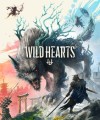
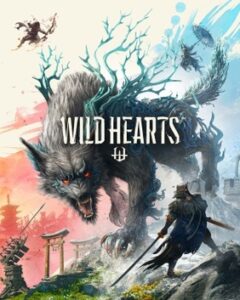
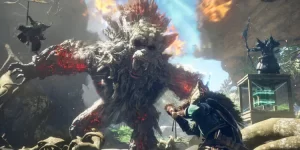
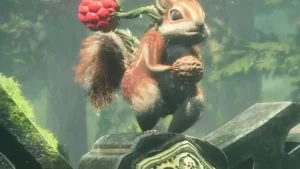

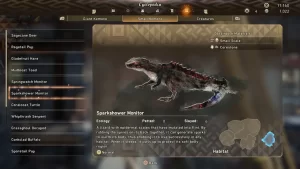
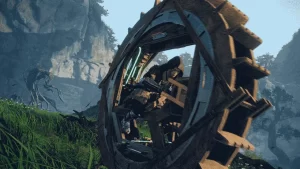












You must be logged in to post a comment.